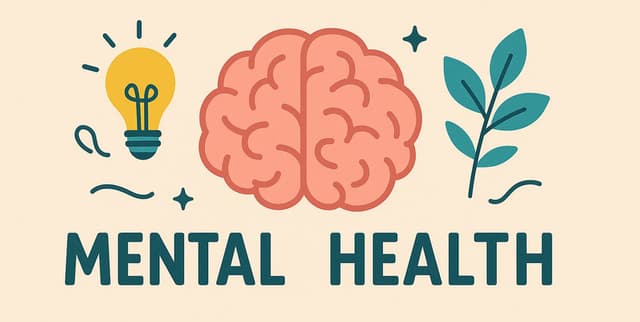Synthetic Employee Mental Wellness Indicators
Mental Health & Wellness
Tags and Keywords
Trusted By




"No reviews yet"
Free
About
Provides a realistic, synthetic simulation of global mental health survey responses from 10,000 individuals, reflecting actual patterns in workplace mental health data. The dataset is fully anonymised to ensure privacy. Understanding patterns in mental health at work, access to treatment, and stigma around disclosure is crucial for developing better workplace policies.
Columns
- age: The respondent's age in years.
- gender: The gender identity of the respondent (e.g., Male, Female, Non-binary).
- employment_status: The respondent's current employment status (e.g., Employed, Unemployed, Student).
- work_environment: The respondent's work setting (e.g., On-site, Remote).
- mental_health_history: A boolean value indicating if the respondent has a history of mental health issues.
- seeks_treatment: A boolean value indicating if the respondent seeks mental health treatment.
- stress_level: A numerical score representing the respondent's stress level.
- sleep_hours: The number of hours the respondent sleeps per night.
- physical_activity_days: The number of days per week the respondent engages in physical activity.
- depression_score: A numerical score indicating the respondent's level of depression.
- anxiety_score: A numerical score indicating the respondent's level of anxiety.
- social_support_score: A numerical score representing the level of social support the respondent receives.
- productivity_score: A numerical score representing the respondent's work productivity.
- mental_health_risk: A categorical assessment of the respondent's mental health risk (e.g., Medium, High).
Distribution
The dataset is provided in a single CSV file named
mental_health_dataset.csv. It contains 10,000 rows, with each row representing an anonymised individual, and includes 14 columns of data. The file size is approximately 608.87 kB.Usage
This dataset is ideal for:
- Training and evaluating machine learning models.
- Practising classification or clustering techniques.
- Performing exploratory data analysis (EDA).
- Studying fairness and bias in mental health predictions.
- Creating realistic dashboards for HR analytics or healthcare systems.
Coverage
The dataset has diverse global coverage, including country and state information. It includes demographic attributes such as age and gender. This is a synthetic dataset generated based on patterns from public surveys and does not contain personally identifiable information; therefore, a specific time range is not applicable.
License
CC BY-NC-SA 4.0
Who Can Use It
- Data Scientists and ML Engineers: Can use it to predict the likelihood of an employee seeking treatment or to build fairness-aware models.
- HR Analysts: Can identify factors correlated with workplace stress and create dashboards for organisational health monitoring.
- Students and Researchers: Can practice data analysis techniques and segment individuals by mental health risk using clustering.
- Healthcare Professionals: Can perform exploratory analysis to understand correlations between lifestyle factors and mental health scores.
Dataset Name Suggestions
- Global Workplace Mental Health Survey (Synthetic)
- Synthetic Employee Mental Wellness Indicators
- Workplace Mental Health & Productivity Analysis Dataset
- Simulated Global Mental Health in the Workplace
- Employee Mental Health Risk Factors (Synthetic Data)
Attributes
Original Data Source: Synthetic Employee Mental Wellness Indicators
Loading...
